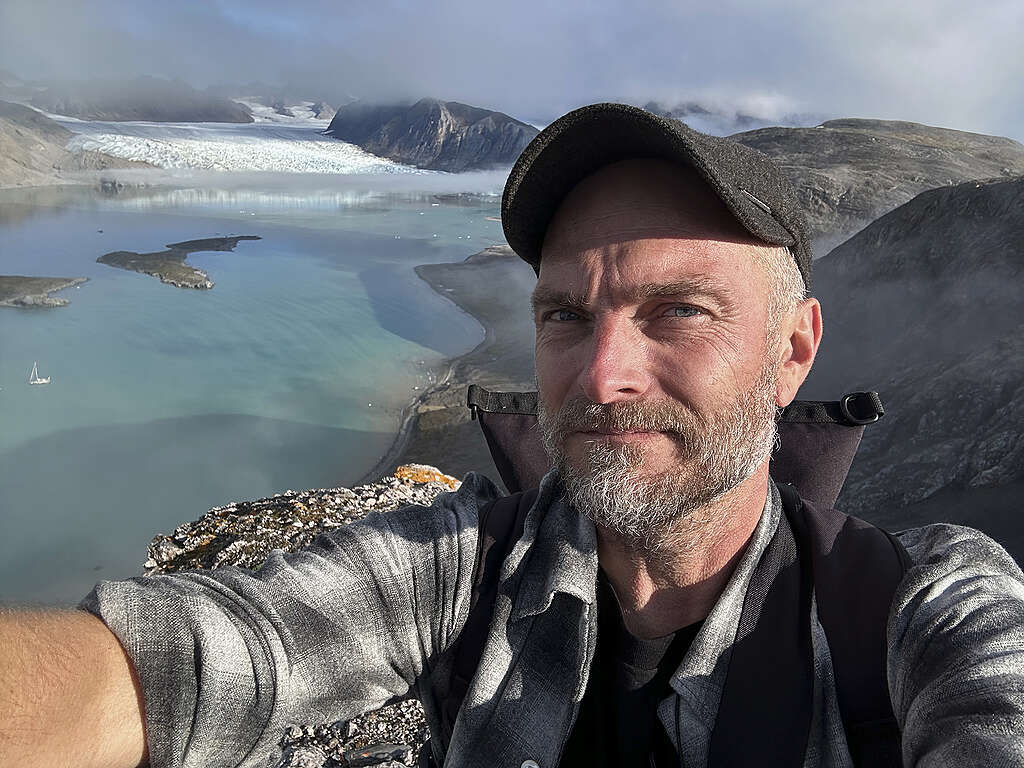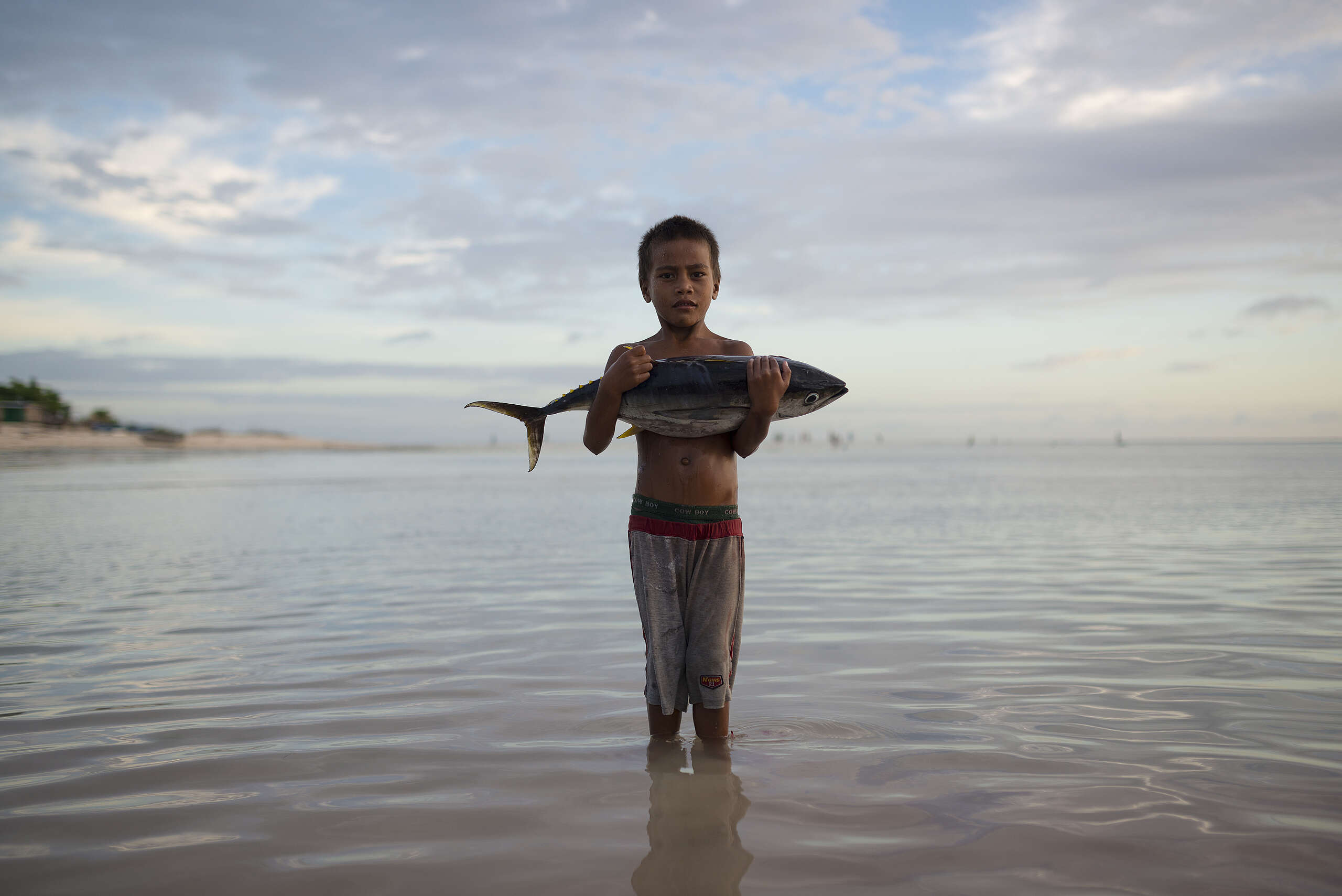In this first edition of a new series showcasing the incredible work of Greenpeace photographers around the globe, we asked Stockholm-based Christian Åslund to select a few of his favourite images, captured over more than 25 years working on Greenpeace campaigns.
Leave a comment below to let us know your favourites, or if you have any questions you’d like Christian to answer about any of these images, or his work documenting the beauty and fragility of the natural world.
2024, Svalbard, Norway – Two images, taken a century apart. This comparison features a historical photograph taken in 1924 by geologist Anders K. Orvin, showcasing the glaciers Kongsbreen, Kronebreen, and Kongsvegen surrounding Collethøgda Island. Since 2002, Christian has been creating glacier comparison images from Svalbard, and these are among the most widely published photographs he’s captured. This ongoing documentary project is a collaboration with the Norwegian Polar Institute and Greenpeace, highlighting glacial retreat over time and the effects of climate change.
The Arctic is warming more than twice as fast as the rest of the planet due to a phenomenon known as ‘Arctic amplification.’ This accelerated warming has global consequences. Melting glaciers and ice sheets contribute to rising sea levels, while the loss of sea ice exposes the dark ocean, which absorbs heat instead of reflecting sunlight like ice and snow. These changes significantly influence global weather patterns.
–

2014, English Channel – Gannets scavenging for discarded fish and bycatch surrounding the German flagged super trawler Maartje Theadora as it fishes for herring in the English Channel. Overfishing is harmful because it depletes fish stocks faster than they can replenish, disrupting marine ecosystems. This affects the food chain, threatens biodiversity, and can collapse fisheries, which many coastal communities rely on for food and income. It also harms other species, as non-targeted marine life (bycatch) often gets caught in the process, further impacting ecological balance.
–

2014, Tarawa Island, Kiribati – 8 year-old Tokabwebwe Teinaura from the village Te O Ni Beeki, helps the fishermen carrying a yellowfin tuna to the shore. Just like his father and grandfather, he wants to become a fisherman when he grows up. Kiribati is considered one of the least developed and poorest countries in the world with people whose livelihoods depend on the fish. Since the arrival of foreign industrial fishing vessels in Kiribati waters, the catches for the local fishermen have been drastically impacted.
–

2016, Sweden – Fiby Urskog is a nature reserve located near Lake Fiby, about 16 kilometres west of Uppsala in Sweden. The area spans 87 hectares, comprising mostly unspoiled forest and hiking paths. The area is characterised by its uprooted and fallen trees and moss-rich ground.
–

2020, Elephant Island, Antarctica – Noah Strycker, a researcher from Stony Brook University in New York, studies the chinstrap penguin population on Elephant Island. Observers must count every penguin nest individually and repeat the count three times within a 5% margin of accuracy to ensure reliable results. To simplify the process, researchers often find a high vantage point and use natural landmarks, like rocks and terrain features, to visually divide large groups of birds into manageable sections.
Over the past few decades, researchers have documented a significant decline in chinstrap penguin populations. Rising temperatures have reduced sea ice, leading to a decrease in krill—a key food source for the penguins. Human activity, including increased fishing for krill, has further intensified competition for this vital resource.
–

Actor Javier Bardem looking at chinstrap penguins after arriving at King George Island in the Antarctic to join Greenpeace ship the Arctic Sunrise in an expedition in support of the largest protected area on Earth, an Antarctic Ocean Sanctuary.
–

2005, New Orleans, U.S.A. – The aftermath of Hurricane Katrina is marked by clear devastation, with towns and villages still submerged in polluted water from local oil industries. Striking in 2005, the hurricane was a turning point in increasing public awareness about the consequences of climate change. The catastrophic flooding and widespread destruction in New Orleans acted as a harsh reminder for many. The storm’s intensity, coupled with its impact on vulnerable communities, underscored the growing frequency and severity of extreme weather events globally – something that has since become a more urgent and widely recognised concern.
–

2001, Iitate, Japan – A Greenpeace team member holds a Geiger counter displaying radiation levels of 7.66 micro Sievert per hour in Iitate village, 40km northwest of the crisis-stricken Fukushima Daiichi nuclear plant, and 20km beyond the official evacuation zone. Radiation levels found by the Greenpeace monitoring team are far above internationally recommended limits. People living here would receive the yearly maximum dose of radioactivity within a few days, yet have not yet been evacuated.
–

2005, Greenland Sea – Underwater image of Norwegian company TGS Nopec conducting seismic blasting off northeast Greenland. The company fires air guns emitting 259-decibel blasts toward the seabed to locate potential oil and gas reservoirs. Above water, this sound intensity would be perceived by humans as roughly eight times louder than a jet engine taking off.
–

2014, Oslo, Norway – Activists dressed as polar bears in an elevator during the Oslo Energy Forum event. The activists attended the event to demand to the oil industry stay out of the Arctic.
–
Christian Åslund, a Swedish photojournalist and filmmaker, is renowned for his work highlighting environmental issues. Since starting his first assignment with Greenpeace in 1998, Åslund has crafted visually compelling and purposeful narratives that merge artistic storytelling with environmental advocacy. His photography captures the planet’s natural beauty while emphasising the critical need for conservation and climate action.

Greenpeace has been a pioneer of photo activism for more than 50 years, and remains committed to bearing witness and exposing environmental injustice through the images we capture.
To see more Greenpeace Photo and Video, please visit our Media Library
Source link
Greenpeace International www.greenpeace.org

